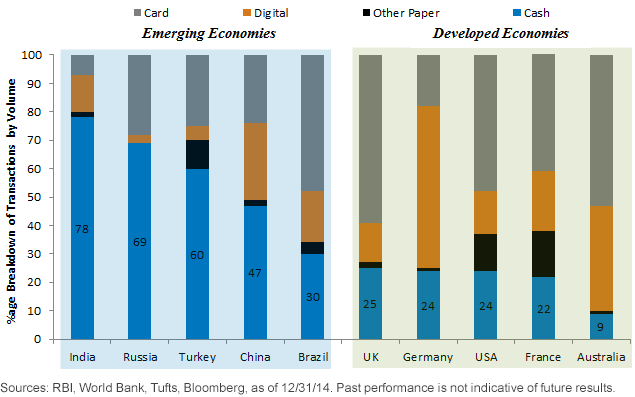As a popular adage goes, “Rome wasn’t built in a day.” There are times in history when the foundation for an empire was quietly built and the world realized it only later.
While we are busy discussing policies ranging from protectionism to immigration in the United States, India quietly laid the foundation for a technology empire that is going to digitally connect 17% of humanity. The full potential of India’s push for digitization will be realized in time, but in my mind this is perhaps the most exciting technology development happening in the world today.
Below I will highlight why investors should not ignore these developments and why they may be under-weight India even by its current economic size.
Networking 1.2 Billion People: The Potential Interaction in India’s $2.4 Trillion Economy
Unorganized employment in India forms a substantial part of the economy, employing nearly 85% of its 500 million-strong work force. Add to it king cash, which forms nearly 80% by value and 98% by volume of all financial transactions, and you are left with the world’s sixth biggest economic machine remaining largely unorganized and unnetworked!
India’s reliance on cash, which is often untaxed and unaccounted for, rivals the highest cash users in the emerging market (EM) world.
India’s Reliance on Cash High Even in Emerging Markets

All of the above is about to change! As a first step in networking this economic superpower, in the last few years, the government of India has pulled off multiple feats that, in my opinion, the world has never seen before.
India has adopted and almost finished a biometric framework, Aadhaar, that uses fingerprints and retina scans of nearly 99% of its population, which essentially means 17% of humanity.1
This sophisticated biometric database—still missing in the Western world—is being used to connect every way an individual interacts with the overall economy. This will revolutionize the entire economy.












Leave A Comment